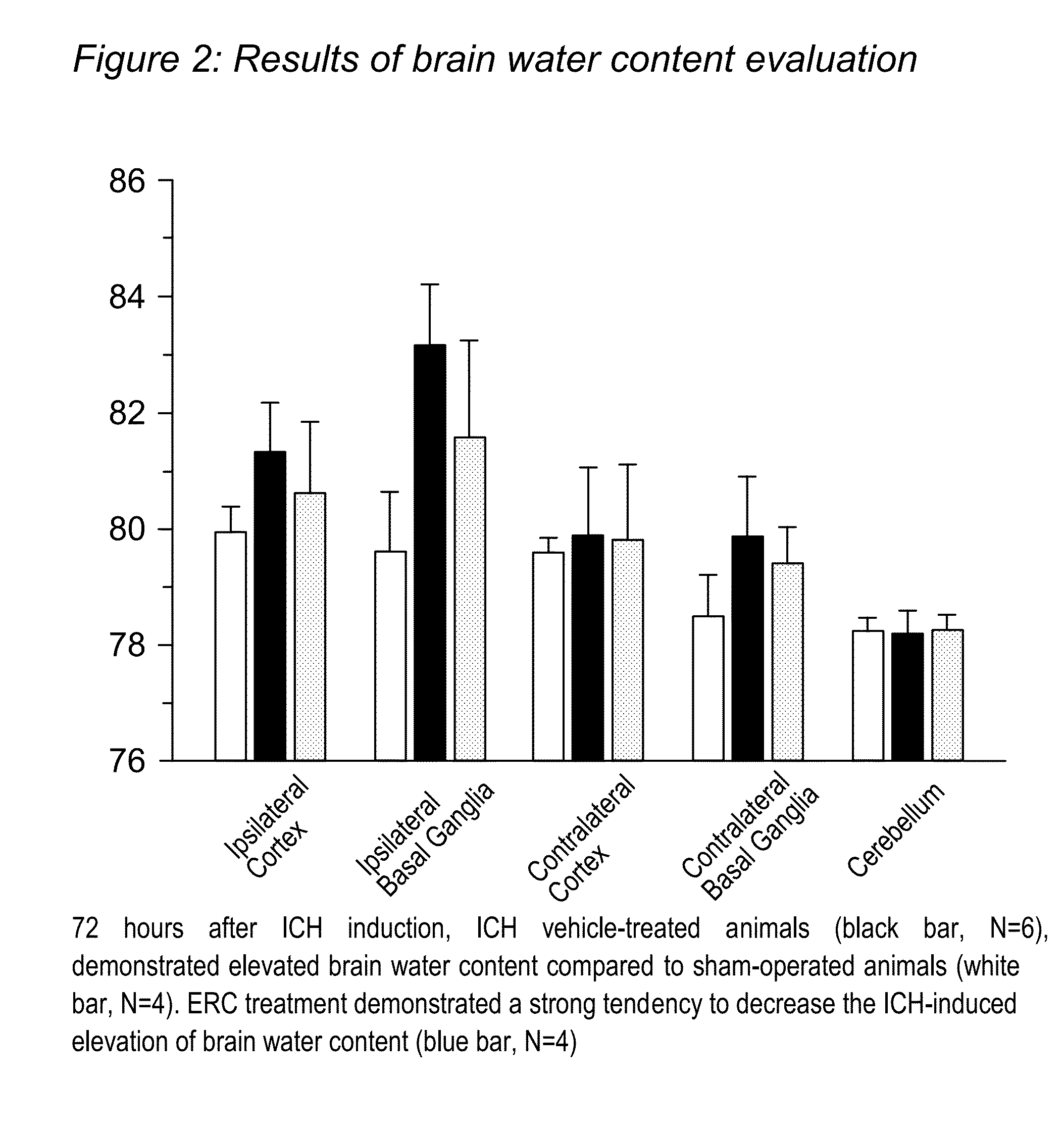Endometrial regenerative cells for treatment of traumatic brain injury
a regenerative cell and endometrial technology, applied in the field of brain injuries, can solve the problems of permanent damage to the brain area, brain function decline, neurological deficit,
- Summary
- Abstract
- Description
- Claims
- Application Information
AI Technical Summary
Benefits of technology
Problems solved by technology
Method used
Image
Examples
example i
Generation of ERC for Treatment of Neurological Indications
[0026]Collection of menstrual blood is performed according to a modification of our published procedure (Meng et al. Journal of Translational Medicine 2007, 5:57) under aseptic conditions. Manufacturing procedures take place in the General BioTechnology class 10,000 clean production suite. Each technician must properly gown when entering in the GMP room. Before entry into the clean lab area, the technician obtains a bunny suit in the ante room. After the hood of the bunny suit is placed on, they obtain a mouth covering and place on, making sure that all hair is fully covered under the hood and mouth covering. The technician then puts on a pair of sterile powder free gloves, and can enter the clean lab space with the thawed vial. Environmental monitoring is performed in the Class 10,000 clean room. The clean room uses Biological Safety Cabinets (BSC) which maintains a Class 5 environment. BSC are certified annually by an outs...
example ii
Treatment of Intracerebral Hemorrhage Model by Intravenous Administration of ERC
[0035]As a model of traumatic brain injury, intracerebral hemorrhage was induced using the “collagenase” model originally described by Rosenberg et al, which was modified as described [22-24]. This “Collagenase” model of ICH involves using CD-1 mice. Despite of several disadvantages of the model (collagenase can cause apoptosis not typically seen in ICH; rather than producing one solid blood clot, injection of collagenase destroys small blood vessels around the injection point producing diffuse hemorrhage), collagenase model is the only model to produce spontaneous re-bleeding, which happens during the first 24 hours in many patient [25]. Additionally “collagenase” model produces more severe damage compared with others used model of ICH resulting in long-term lasting neurological deficits [10]. Therefore it is the only suitable model for long-term studies. Animals were housed with a 12-h light / dark cycle...
PUM
| Property | Measurement | Unit |
|---|---|---|
| time | aaaaa | aaaaa |
| temperature | aaaaa | aaaaa |
| temperature | aaaaa | aaaaa |
Abstract
Description
Claims
Application Information
 Login to View More
Login to View More - R&D
- Intellectual Property
- Life Sciences
- Materials
- Tech Scout
- Unparalleled Data Quality
- Higher Quality Content
- 60% Fewer Hallucinations
Browse by: Latest US Patents, China's latest patents, Technical Efficacy Thesaurus, Application Domain, Technology Topic, Popular Technical Reports.
© 2025 PatSnap. All rights reserved.Legal|Privacy policy|Modern Slavery Act Transparency Statement|Sitemap|About US| Contact US: help@patsnap.com



